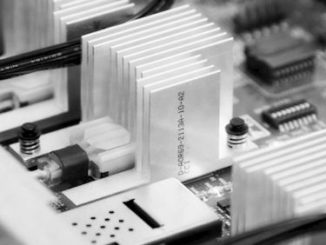
A Surprising New Job for ReRAM Technology
Resistive RAM (ReRAM) technology has been waiting for its moment in the sun for several years now. …

Resistive RAM (ReRAM) technology has been waiting for its moment in the sun for several years now. …

Even before it launched a $1.3 billion acquisition of Cray back in May, Hewlett Packard Enterprise has had exascale aspirations. …

A lot of money and time is being thrown at quantum computing by vendors, including IBM, Google, Microsoft, and Intel, and there is the normal competitiveness between the United States and China and Europe as well as work in Japan. …

It has been four years since Kirk Bresniker, HPE Fellow, vice president, and chief architect at Hewlett Packard Labs, stood before a crowd of journalists and analysts at the company’s Discover show and announced plans to create a new computing architecture that puts the focus on memory and will eventually use such technologies as silicon photonics and memristors. …

The exascale effort in the U.S. got a fresh injection with R&D funding set to course through six HPC vendors to develop scalable, reliable, and efficient architectures and components for new systems in the post-2020 timeframe. …

Much has been made of the ability of The Machine, the system with the novel silicon photonics interconnect and massively scalable shared memory pool being developed by Hewlett Packard Enterprise, to already address more main memory at once across many compute elements than many big iron NUMA servers. …

The US Department of Energy – and the hardware vendors it partners with – are set to enliven the exascale effort with nearly a half billion dollars in research, development, and deployment investments. …

Hewlett Packard Enterprise is not just a manufacturer that takes components from Intel and assembles them into systems. …

In the previous article, we left off with the basic storage model having its objects first existing as changed in the processor’s cache, then being aged into volatile DRAM memory, often with changes first logged synchronously into I/O-based persistent storage, and later with the object’s changes proper later copied from volatile memory into persistent storage. …

Some techies are capable of writing programs in assembler, but all will agree that they are very glad that they don’t need to. …
All Content Copyright The Next Platform